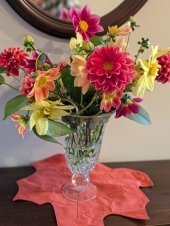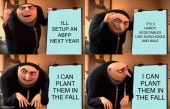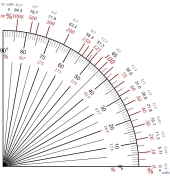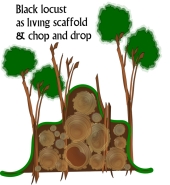Bj Murrey wrote:
This "pattern" would drive me nuts. It's a hassle to get to the office at the center... nothing in nature works like this... it will take care to preserve this shape and layout...
I would only use this if I had a full time gardener and the office was some sort of local attraction people came to see...
I'd never use this at my home! Think about bringing a wheelbarrow to the center... PAIN IN THE....
Wasted walking, and once it's filled in with plants you can't see any spirals but from the air... and I can't fly.
Instead of these labor intensive designs, spirals, just use "comma" (like the punctuation) shapes... simpler, same principles, none of the obstacles or annoyance...
UNLESS of course you designing it all for the airplane passengers who might fly over and look someday
Great feedback, BJ!
I designed my orchard about 7 years ago, and your feedback is welcome. Of course, I designed it for me, but if I were designing for others, it would have looked
drastically differently. Some replies regarding the "non-efficient" shape:
1) Yes, I did design it for aerial view!
I was a Navy H-60 pilot in my former life. I believe one of the primary reasons people fly is so they can enjoy the earth, not the sky. This is the kind of thing that makes heads turn and people smile or go "hmm" and feel a sense of wonder. Lots of civilian and military aircraft overfly the farm. I even keep a "runway" field free of large trees...just in case someone needs to make an emergency landing some day.
2) Yes, I did design it to eventually be an attraction.
I want it to be a meditative walking labyrinth-like experience were families can enter and slow down and pick fruits and veggies and flowers. I am building the office at a different spot for greater ease of access, but when folks enter the spiral and get to the center, I want to have it so they can picnic or press fresh cider or dance on a bandstand, or do some agritourist-y things with a sense of privacy. The don't have to follow a "path" though. They will be able to walk between the trees, too.
3) It's a slow / defensive / private pattern, kind of like a snail.
The spiral shape is my (not yet launched) business logo, and it reminds me of a helicopter main and tail rotor system, a nod to my past. But moreover, the "E" shape is a silly "love letter" to my wife.
So overall, it's intended for a sense of intimacy, not efficiency.











